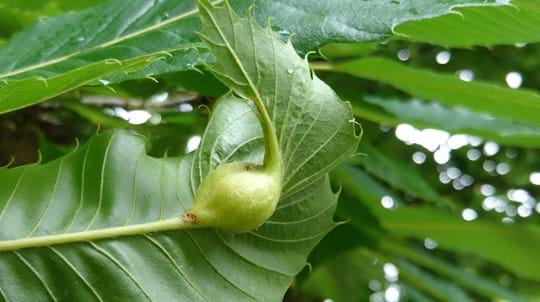
Tree health

Fera Science Ltd
While walking near the centre of Brussels in early May I passed beneath some ornamental cherry trees. I felt tiny droplets of liquid falling on me but as it had been raining earlier I thought nothing of it. However the droplets were annoyingly sticky, as was the pavement beneath my feet. Looking up I realised that many of the smaller branches were completely encrusted with a massive population of scale insects.
They are highly specialised plant parasites related to aphids, whiteflies and psyllids. Adult females don’t look like insects at all as they lack wings and are immobile for much of their lives. This is because they are neotenic – they reach sexual maturity while in a larval state (like an axolotl). Some species weren’t even originally recognised as insects. For example, the Romans thought that scale insects (used to obtain a crimson dye – vermilion – for their tunics) were actually berries! In the 19th century one type of scale was apparently only determined to be an animal and not plant matter after a lawsuit. Male scale insects, however, have extra developmental stages and the adults look like tiny flies with a single pair of wings.
The insect infesting trees in the centre of Brussels was globose scale or plum lecanium (Sphaerolecanium prunastri). This species is native to southern and central Europe and is one of many examples of insects that have been expanding their geographical range northwards in recent decades in response to climate change. Globose scale feeds almost exclusively on Prunus (eg cherries, plum and peach) and rarely on other plants. In southern Europe, population outbreaks regularly occur which can completely encrust branches (I have recently seen large populations in Greece and Montenegro). This causes stunting, drying out, dieback and occasionally plant death.
This is the first time that globose scale has been found in Belgium and it is likely to continue expanding its geographical range in association with climate change. It may be able to establish in parts of southern England and is a potential pest of plum, peach and ornamental cherry. The insects damage the host plants directly by extracting large volumes of plant sap and indirectly by the black sooty moulds that grow on the honeydew, reducing photosynthesis and gas exchange.
Adult female globose scales are about 2.5 mm across, strongly convex to almost circular. Young adults are attractive in colour being yellow and covered with longitudinal rows of black spots that may coalesce. The adults turn red then reddish-brown with maturity and older females become a very dark, drab brown. Immature males produce a translucent-wax protective cover. They often occur in separate dense groups, giving the infested bark a whitish tinge.
Any suspected outbreaks of globose scale should be reported via Tree Alert. More information on the globose scale can be here found here.